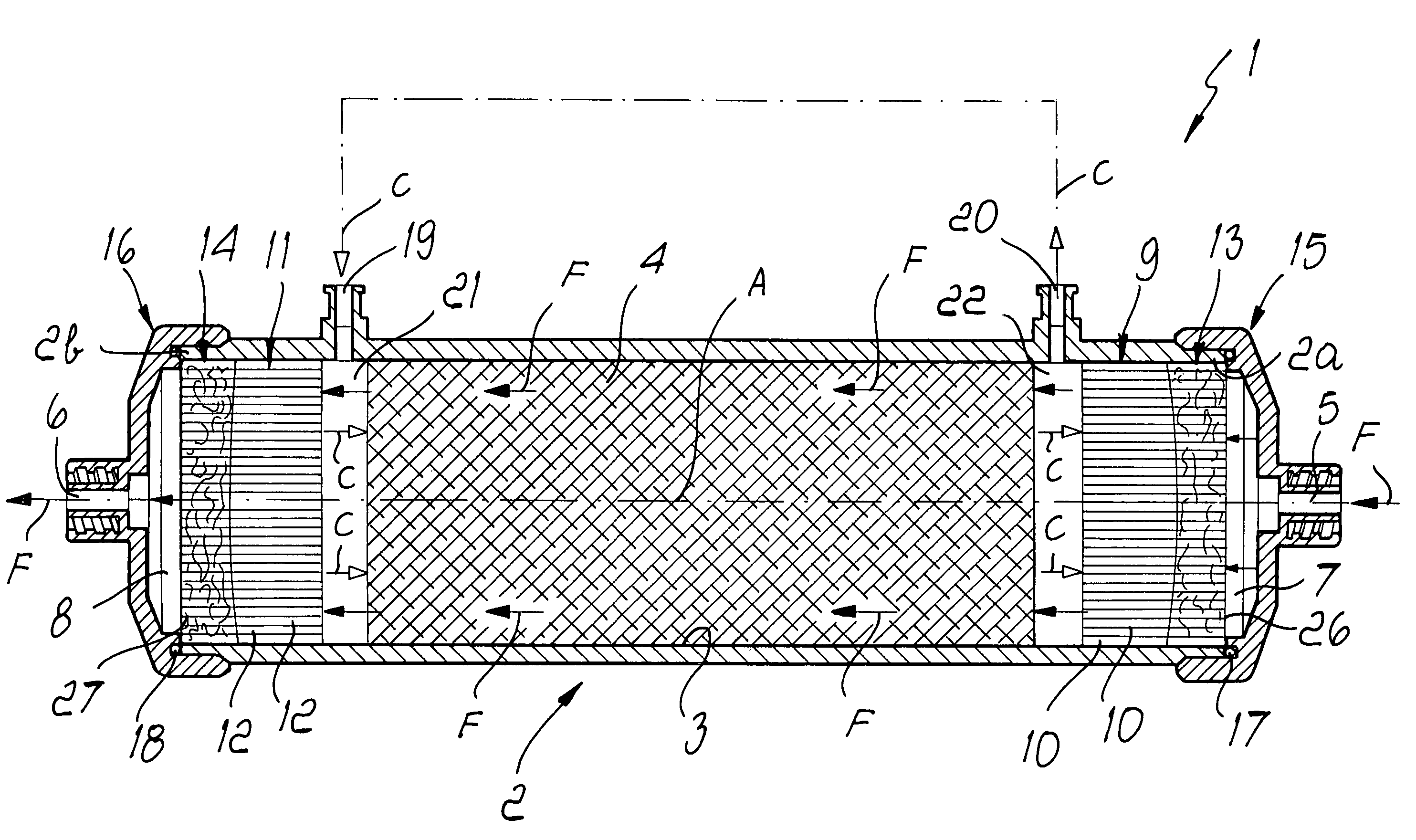Bioreactor, particularly for bioartificial organs
a bioreactor and organ technology, applied in the field of bioreactors, biological, microbiological and medical, can solve the problems of reducing the useful volume of cell culture with respect to the total volume, limiting the utilization of actual exchange capacity, and reducing efficiency, so as to reduce the use of different types of materials, limit and facilitate assembly operations, the effect of containing production times and costs
- Summary
- Abstract
- Description
- Claims
- Application Information
AI Technical Summary
Benefits of technology
Problems solved by technology
Method used
Image
Examples
Embodiment Construction
[0031]With reference to the figures, the reference numeral 1 generally designates a bioreactor, particularly for bioartificial organs.
[0032]The bioreactor 1 comprises a substantially tubular closed body 2, inside which there is a containment cavity 3, and an animal and / or human cell culture and support structure 4, which is accommodated in the cavity 3 and is suitable to be crossed by a fluid to be processed, such as for example plasma or ultrafiltrate.
[0033]The body 2 is provided with a port 5 for the inflow of the fluid to be processed, which is formed upstream of the structure 4, and with a port 6 for the outflow of the processed fluid, which is formed downstream of the structure 4.
[0034]Inside the cavity 3 and upstream of the structure 4 there is a first chamber 7 for collecting the fluid to be processed, which is connected to the outside of the body 2 by means of the inflow port 5; also inside the cavity 3, but downstream of the structure 4, there is a second chamber 8 for coll...
PUM
| Property | Measurement | Unit |
|---|---|---|
| angle | aaaaa | aaaaa |
| angle | aaaaa | aaaaa |
| diameter | aaaaa | aaaaa |
Abstract
Description
Claims
Application Information
 Login to View More
Login to View More - R&D
- Intellectual Property
- Life Sciences
- Materials
- Tech Scout
- Unparalleled Data Quality
- Higher Quality Content
- 60% Fewer Hallucinations
Browse by: Latest US Patents, China's latest patents, Technical Efficacy Thesaurus, Application Domain, Technology Topic, Popular Technical Reports.
© 2025 PatSnap. All rights reserved.Legal|Privacy policy|Modern Slavery Act Transparency Statement|Sitemap|About US| Contact US: help@patsnap.com



